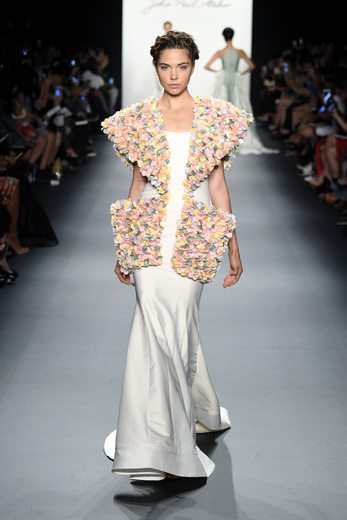Warning: Undefined array key "sharing_networks_networks_sorting" in /var/www/wp-content/plugins/monarch/monarch.php on line 3904
Warning: Trying to access array offset on value of type null in /var/www/wp-content/plugins/monarch/monarch.php on line 3904

The John Paul Ataker Spring/Summer 2017 collection takes us back to the designer’s family’s ancient Assyrian culture, inspiring classically modern prints and sculpted shapes that create an elegantly tailored silhouette to enhance the feminine form. Numan took reference from the abundant lush, floral gardens of Babylon, created by the king for his one true love, the goddess Ishtar, this season’s muse. The skillfully-crafted designs begin with innovative yarns sourced from wood fibers such as viscose and acetate.
The brand’s core attributes of deliberate detailing and sculpted forms allows the John Paul Ataker woman to explore her interest in both feminine and masculine dressing through casually elegant blouses and trousers, and structured, tailored gowns. The Spring/Summer 2017 color palate ranges from light salmon, lavender, and sky blue hues to argil browns. Effortlessly refined pastels, noble prints and opulent references stem from Ishtar, the eighth gate to the inner city of Babylon.
“Fabric gives voice to my needs, like a painting through which I can express myself. I can merge together different colors, quality of threads, and techniques to reach the pattern I want; this is a process that demands time and passion,” remarks the Turkish designer Numan Ataker on his creative process.
Unexpected materials interweave while skeins of threads and prints appear in hemlines, bodices and sleeves, all of which are a nod to the ancient Assyrian kingdom. Trends for the season include asymmetrical lines, suit dressing, a monochromatic palette, contrasting piping and ruffle details, feminine silhouettes, cut-outs, and floral appliques.
The designer continues, “I used historical references to tell of my family’s heritage and the powerful civilization that has influenced architecture, art and fashion. Babylon’s daily culture was surrounded with beautifully engineered gardens that were unbelievably colorful and structured.”































